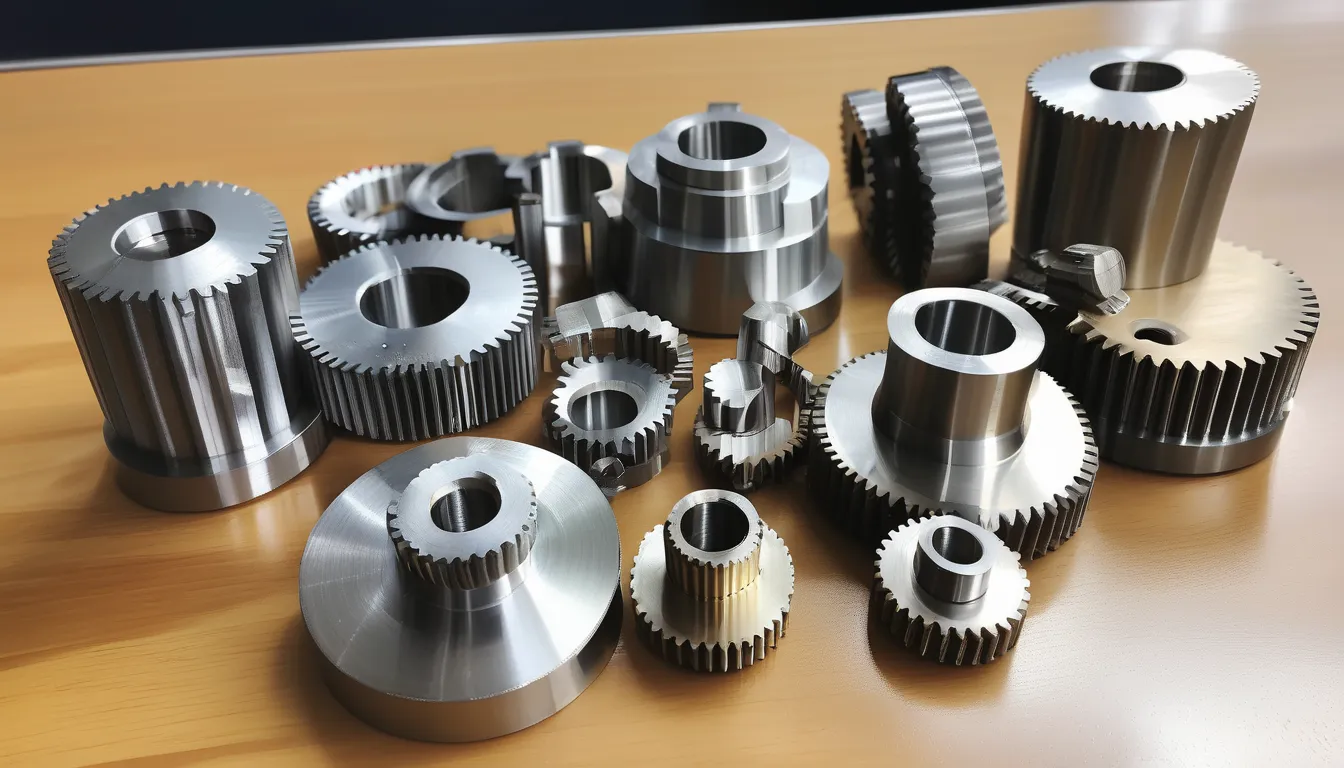As you consider the future of gearbox manufacturing, it’s clear that sustainable practices aren’t just a trend—they’re becoming essential. You might wonder how innovations in materials and energy-efficient production techniques can reshape the industry. Real-time monitoring and modular designs could reduce waste and enhance efficiency, but what challenges lie ahead in implementing these changes? Exploring the balance between sustainability and profitability might reveal unexpected insights that could redefine your approach to manufacturing.
Importance of Sustainability in Gearbox Manufacturing
Sustainability plays a crucial role in gearbox manufacturing, as it directly impacts both the environment and the industry’s future. You’ll find that adopting sustainable practices helps reduce waste and energy consumption, making your operations more efficient. This not only lowers costs but also enhances your brand’s reputation, appealing to environmentally conscious consumers.
When you prioritize sustainability, you’re contributing to a healthier planet. By minimizing the carbon footprint associated with gearbox production, you help combat climate change. This proactive approach sets a positive example for your peers in the industry, encouraging them to follow suit.
Moreover, regulatory pressures are increasing, and you need to stay ahead of compliance issues. Implementing sustainable practices can help avoid potential fines and maintain your competitive edge.
Investing in sustainable technologies and processes ultimately leads to better long-term profitability. As resources become scarcer, your ability to operate sustainably will differentiate you from competitors.
Innovations in Sustainable Materials
Frequently, manufacturers are exploring innovations in sustainable materials to enhance the efficiency and environmental impact of gearbox production. You might be surprised to learn that many companies are turning to bio-based composites, which not only reduce reliance on fossil fuels but also offer impressive strength and durability. These materials often come from renewable resources, aligning with the growing demand for eco-friendly practices.
Another exciting innovation is the use of recycled metals. By incorporating recycled aluminum and steel into their designs, manufacturers are decreasing landfill waste while cutting down on energy consumption during production. This approach not only conserves natural resources but also helps lower greenhouse gas emissions.
In addition, some companies are experimenting with advanced polymers that are lighter and more resilient than traditional materials. These high-performance polymers can improve gearbox efficiency by reducing weight, which translates to better energy usage.
Lastly, you’ll find that many manufacturers are committed to ensuring their supply chains are sustainable, sourcing materials from certified suppliers who prioritize environmental stewardship.
Energy-Efficient Production Techniques
As manufacturers adopt sustainable materials, they’re also focusing on energy-efficient production techniques to further minimize their environmental impact. One effective approach is optimizing machinery operations. By regularly maintaining and upgrading equipment, you can reduce energy consumption and improve performance.
Implementing advanced technologies, like variable frequency drives (VFDs), allows for better control over motor speeds, which directly lowers power usage during production.
Another key technique is adopting lean manufacturing principles. By streamlining processes and minimizing waste, you can significantly reduce energy usage. This approach encourages you to evaluate each step in the production process, identifying areas for improvement and eliminating any inefficiencies.
Investing in renewable energy sources, such as solar or wind power, can also be a game-changer. By generating your own energy, you not only cut costs but also decrease reliance on fossil fuels.
Additionally, integrating energy management systems helps you monitor and analyze energy consumption in real time, making it easier to identify trends and potential savings.
Incorporating these energy-efficient production techniques not only benefits the environment but also enhances your bottom line, positioning your operation as a leader in the sustainable manufacturing landscape.
Recycling and Circular Economy Practices
Embracing recycling and circular economy practices can significantly enhance the sustainability of gearbox manufacturing. By prioritizing the reuse of materials, you can reduce waste and lower production costs.
Implementing a closed-loop system means you’re not just discarding old gearboxes; instead, you’re reprocessing components to create new products. This approach minimizes the need for virgin materials, which is crucial in conserving natural resources.
You can also encourage your suppliers to adopt similar practices, ensuring that the entire supply chain aligns with your sustainability goals. For example, sourcing recycled metals or plastics can help you lower your carbon footprint while supporting a circular economy.
Additionally, designing industrial gearbox manufacturer es for easy disassembly allows for more efficient recycling at the end of their life cycle.
Investing in technologies that facilitate recycling, such as advanced sorting and processing equipment, can pay off in the long run. Not only does it demonstrate your commitment to sustainable practices, but it also positions your company as a leader in the industry.
Future Trends in Gearbox Manufacturing
The next decade will bring transformative trends in gearbox manufacturing, driven by advancements in technology and sustainability. As you look towards the future, you’ll notice several key shifts that will redefine the industry.
First, digitalization will play a crucial role. You’ll see increased integration of IoT devices, providing real-time monitoring and predictive maintenance.
Here are some trends to watch for:
- Eco-friendly materials: Expect a shift towards sustainable materials that reduce environmental impact.
- Automation: Robotics and AI will streamline production processes, improving efficiency and consistency.
- Modular designs: Gearboxes designed for easy upgrades will allow for longer life cycles and reduced waste.
- Energy efficiency: Innovations in design will focus on minimizing energy consumption during operation.
- Collaborative manufacturing: Partnerships will flourish, with companies working together to share resources and best practices.
As these trends emerge, you’ll find that the gearbox manufacturing landscape won’t only become more efficient but also align more closely with global sustainability goals.
Embracing these changes will be vital for your success in the evolving market.
Conclusion
As you look to the future of gearbox manufacturing, embracing sustainable practices is essential. By integrating eco-friendly materials, energy-efficient techniques, and advanced recycling methods, you can significantly reduce your environmental impact. Staying ahead of trends in digitalization and modular designs not only enhances production efficiency but also fosters collaboration within the industry. Together, these innovations pave the way for a more sustainable, resource-efficient future that benefits both your business and the planet.



Recent Comments